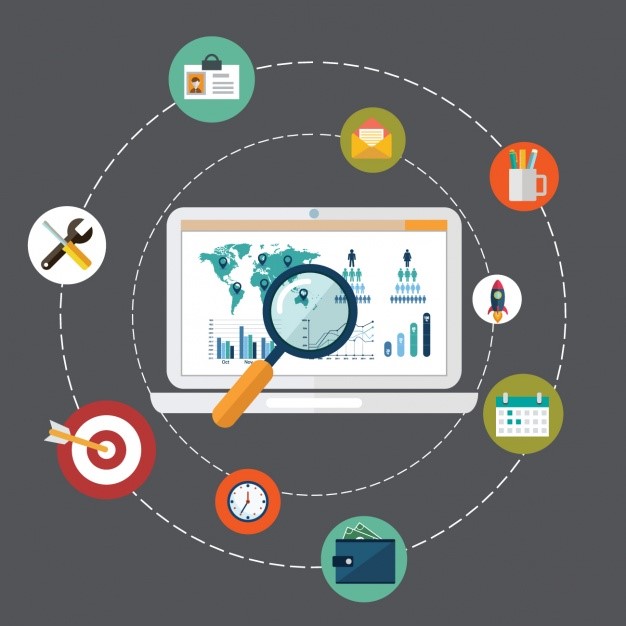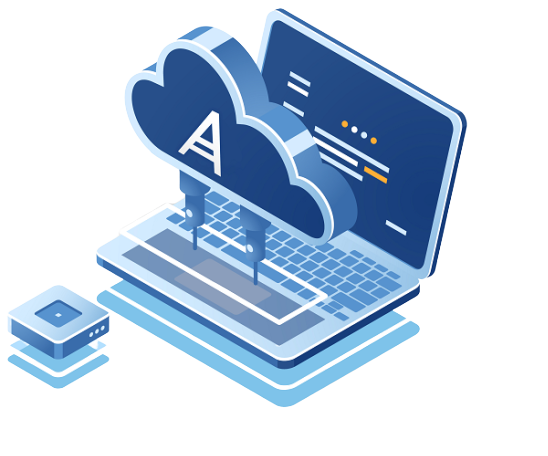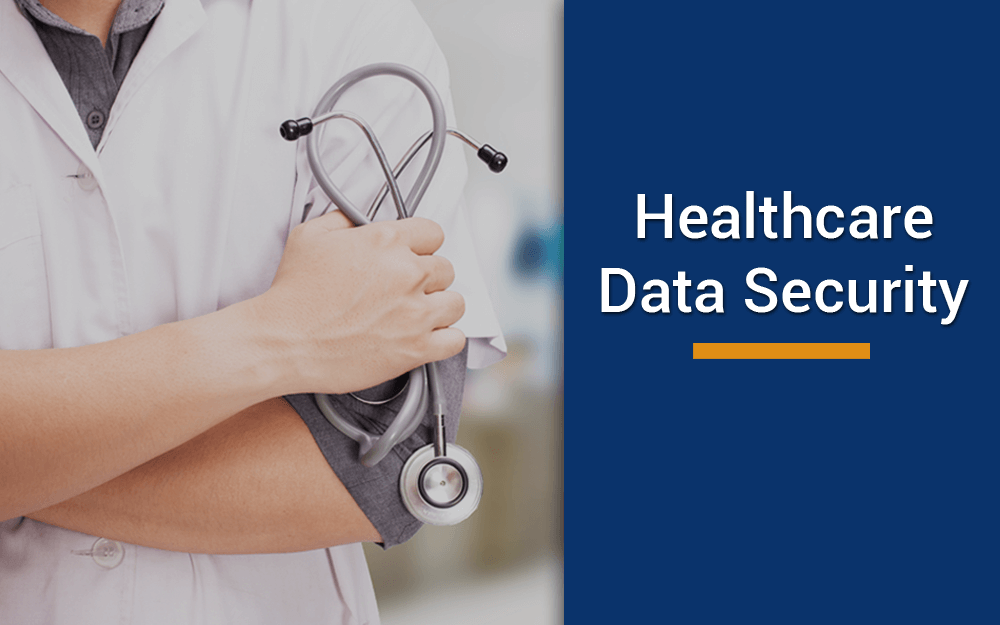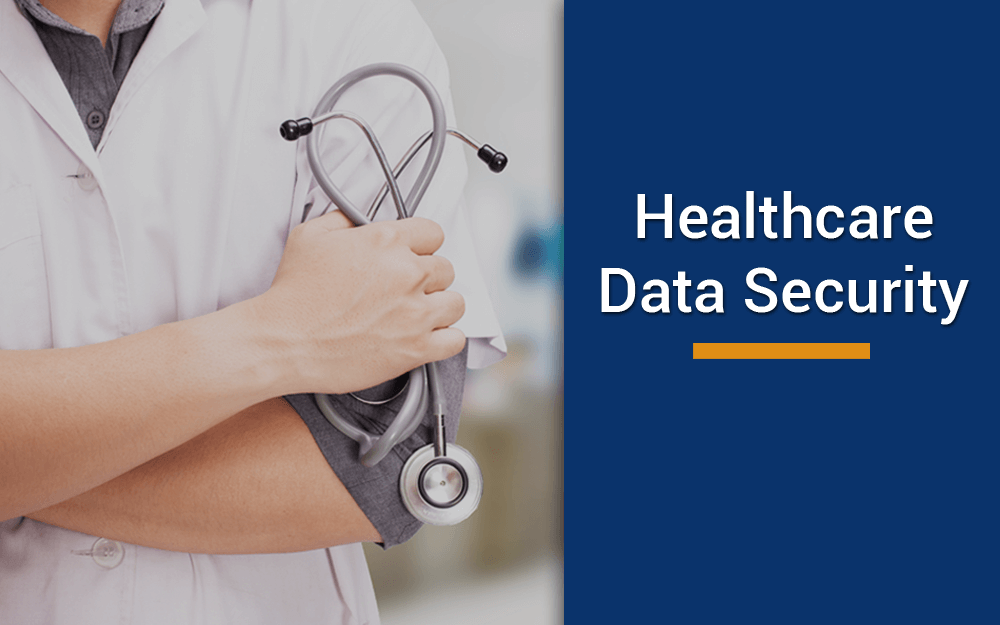“It takes 20 years to build a reputation and few minutes of cyber-incident to ruin it.” – Stephane Nappo, Global CISO, OVH Cloud
Data security has become one of the biggest concerns for businesses of all sizes today, with data breaches and cyberattacks rapidly on the rise.
Cyberthreats and data breaches can cause huge disruptions to businesses, especially healthcare if the right data security best practices, tools and strategies are not in place.
What is data security?
Data security is the process of keeping your data safe and secure from unauthorized access. It includes preventing cyber threats against all the data residing in the computers, databases, websites, as well as the cloud. It is also called information security.

Image Source: Freepik
Elements of data security
A company with the right data security strategy follows the CIA triad security model. CIA stands for Confidentiality, Integrity, and Availability. These are the three core elements of data security for businesses to keep their information safe and secure.
- Confidentiality means that only authorized people can access the data.
- Integrity means that the data and information are reliable and accurate.
- Whereas, the availability ensures that the data is available and can be accessed at any time for business requirements.
Before we dive into the data security best practices for keeping business data secure, let’s first understand its importance, risks, target industries, and more.
What is the importance of data security?
Why data security is so important for businesses? Well, business data includes customer information, payment information, sensitive files, banking details, etc.
Undoubtedly, you can’t afford to lose this data or allow unauthorized people to access it. Losing this data to cybercriminals can have a huge impact on your business.
According to IBM’s “2019 Cost of a Data Breach Report”, the average total cost of a data breach is $3.92 million. Healthcare is the most expensive industry for a data breach incident, costing $6.45 million per attack.
Apart from the devastating financial losses, the data breaches can significantly impact the reputation of the company for years. Hence, the data security best practices have to be everywhere— server, endpoint, office, home, and across the web and cloud.
Why data security is the biggest concern of healthcare?
Along with all other industries, the healthcare is also getting digitized. However, the healthcare organizations aren’t investing much on cybersecurity. With the transformation from paper records to EHRs (electronic health records), the attack surface in healthcare has significantly increased.

Image Source: Pexels
In 2018 alone, over 15,085,302 patient records were breached. In the last two years, 89% of organizations in healthcare have experienced at least one data breach. Furthermore, the ransomware attacks on healthcare organizations are the highest, and are expected to quadruple by 2020.
The organizations are using outdated medical hardware and software and some of them are struggling to keep up with the pace. Patients also have access to their data, but they don’t secure their login details the way they do their banking details.
Data security best practices for healthcare industry
While businesses are following several methods to secure their data, hackers are still able to attack them. There is a need to follow the data security best practices and tools to effectively secure the data.
#1 Identifying confidential data
The first thing to do is to understand where most of your data lies, which data is sensitive, who has access to all the data, etc. When you know these things about the data, you are in a better position to assign the right resources and tools for data security. Furthermore, it becomes easier for you to craft a good data security strategy.
Although not all the business data is of the same value, but you should have tight measures for all of it. You should have complete visibility into the data to find critical data over all the applications, ports, and protocols.

Image Source: Freepik
#2 Limiting access to data
Analyze which employees have access to confidential data. Not all employees need to have the same rights to access confidential data.
Giving privileged access unnecessarily is a big issue that is not identified by many organizations. When most of the employees can manage or access the data, it is at a big risk of data breach, theft, and hacking.

Image Source: Freepik
What this means is that enterprises have to limit the data access. There is a need to find what an individual needs access to and make sure that he/she accesses only what is needed. Nothing else. This can make data management more efficient and reduce the risk of data loss.
Many studies show that most of the data breaches are the result of compromised privileged accesses and credentials. Insider breaches, whether intentional or unintentional, mostly remain unnoticed for a long time. This causes a massive damage to healthcare businesses.
#3 Creating data security policy
With the rise in cybercrime against both public and private organizations, it is crucial to create a data security policy. There are some key elements which should be included in the policy.

Image Source: Unsplash
- First, all the staff, workforce, and management team should know about their responsibilities and expectations. The data access should be divided properly so that the management and workers know what is there for them and how should they treat the data.
- Second, there should be a section in the policy to define how the issues related to remote workers, routers, and IP addresses are handled.
- Third, the data security policy should have a routine to scan the entire IT infrastructure regularly. This can help in finding any flaws and vulnerabilities in the system before attackers do.
- Fourth, the company should know what to do in case a data breach occurs. There should be proper measures in place to handle the issues and prevent such things from happening again.
These are the main things to be added to the data security policy. There could be more things as well, like account monitoring, acceptable use policies, email policies, etc.
#4 Having cloud backup plan
Over 140K hard disk drives fail every week in the United States alone. When it comes to securing the business data and planning for disaster recovery, nothing is better than the cloud backup solutions like Acronis Backup Cloud.
The cloud backup solutions store your data on remote servers in the cloud, so that it remains secure and protected from natural and manmade disasters. Even if a cybersecurity incident occurs, you can easily recover all your data without losing anything.
That’s why every business must back up data to the cloud on a regular basis. For example, backing up the data to Acronis Backup Cloud can keep all the data secure and protected. The data remains available and accessible all the time and can be restored without much efforts.
Furthermore, the Acronis Backup Cloud is a hybrid cloud backup solution, that is easy to use and manage, affordable, and is a secure option.

#5 Educating employees on data security best practices
For 34% of the businesses, careless or unaware employees are the biggest vulnerability.
It is very important for businesses to train and educate their employees about data security tips and practices. All the employees should know the consequences of a cyberattack that could occur because of their ignorance. For example, they should know what could possibly happen if they access work documents over a public Wi-Fi network at the railway station or a coffee shop.
There should be regular training sessions for employees where the IT team can discuss with them about cybersecurity trends and incidents, how these things happen, and what they need to do to avoid it. Tell them to update their passwords often, how to identify phishing emails, things to do before clicking links, etc.

Image Source: Freepik
#6 Using stronger and different passwords for every department
Every employee and department should use unique and strong passwords. A strong password consists of alphabets (both in small and capital letters), numbers, and symbols. The passwords should be different for every account.
It’s because if one of the passwords is cracked, the attackers might try the same on other programs/accounts. If the same password is used everywhere, the other accounts might also get hacked.
Multi-factor authentication should also be used for all the accounts to add an additional layer of security. These passwords should be changed at least once a month.

Image Source: Skyhighnetworks
Handing over to you!
Data is the lifeblood of your business. Seventy-six percent of businesses increase their budget on cybersecurity after an incident. It will be better to invest beforehand, rather than waiting for anything untoward to occur.
Now is the right time for you to analyze things and invest on data security by using the right cloud backup solution, training the people, having a data security policy, and limiting the data access.









